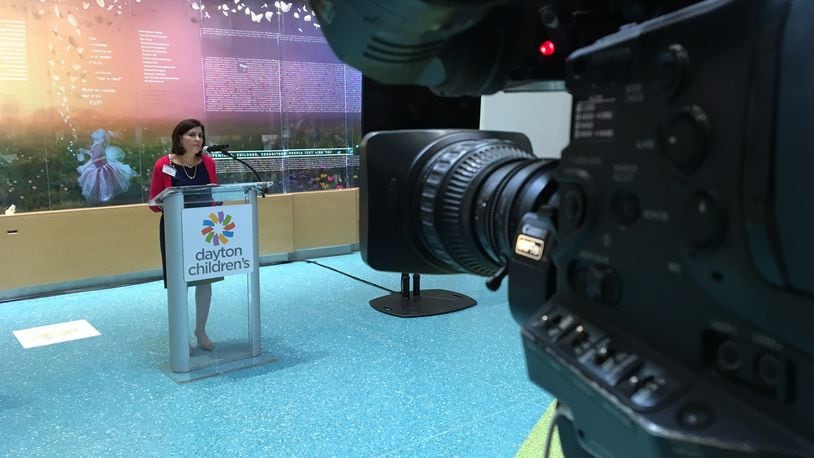RELATED: Premier, UD announce firm to lead plan for fairgrounds redevelopment
Dayton Children’s plans to grow its services for mental health and community health by 2019 was prompted by a health survey it does every three years to guide where it invests resources next.
The pediatrics hospital said last year it evaluated nearly 1,000 children in severe crisis and hospital officials said there is a need for improved mental health services for children.
RELATED: Take a look at Dayton Children’s new patient tower
For now, there are 22 beds at Kettering Behavioral Medicine Center for children getting behavioral health treatment. Upper Valley Medical Center, a Troy hospital affiliated with Premier Health, used to have an adolescent mental program which closed down a year ago. Upper Valley Medical Center said it closed the unit after it couldn’t find a replacement for its outgoing adolescent inpatient psychiatrist.
The American Academy of Child and Adolescent Psychiatry has reported that 43 of the states in the U.S., including Ohio and surrounding states, have a severe shortage of practicing child and adolescent psychiatrists.
RELATED: Victims of HIV status breach can get cash, counseling
Dr. Greg Ramey, executive director for the Dayton Children’s Center for Pediatric Mental Health Resources, said when those hospital beds are full, sometimes children have to go out of state to be treated.
By adding 12 to 20 beds at Dayton Children’s, more local children will be able to remain in their community and receive treatment, he said.
“I am incredibly grateful that as always Dayton Children’s continues to put the needs of children at the center of all we do,” Ramey said. “Soon we’ll be able to offer more for those who turn to us in times of struggle.”
Ramey said one of the challenges in the field of children’s mental health is that services available to children in mental or behavioral crisis continue to be fragmented, duplicative, and confusing for parents and professionals.
RELATED: As flu season nears, flu shots recommended
The crisis assessment will provide a place for children ages eleven and older in crisis to be evaluated by a trained mental and behavioral health professional and to be connected to the most appropriate care and services for their distinct needs.
The hospital is training all doctors in what it calls trauma informed care, which is a way of approaching families medical care that is more sensitive to traumas they may have encountered in their past and could affect how they interpret medical care.
Additionally, the hospital’s new assessment will mean the hospital will build the “Center for Community Health and Advocacy,” which will look look at ways to partner with other agencies and tackle health problems that trace back to environmental issues.
RELATED: Dayton hospital gets $25,000 for youth behavioral health treatment program
The proposed two-story medical center will likely be about 40,000 to 50,000 square feet and bring hospital programs together under one roof that will all help address issues outside the hospital that affect children’s health. It will have the hospital’s primary care office, it will serve as a home for kids in foster care, and other community health programs that will move under the center’s umbrella like the hospital’s Dayton Asthma Alliance, the Center for Child Health and Wellness and the advocacy efforts to stop child abuse through CARE House.
Dr. Jonathan Thackeray, who recently served as the deputy medical director for Ohio Medicaid, will be medical director for the newly created institute.
“We know that the work we do here is only 40 percent of the battle. Twenty-percent of a child’s health is determined by his or her environment and another 40 percent determined by behavior,” Thackery said. “So how do we reach outside the hospital walls to ensure that a child with asthma has a clean home, enough to eat and a proper place to sleep so their immune system is strong?”
Dayton-area children’s mental health
• 9 percent of local children experienced two or more adverse childhood experiences
• 19 percent of mothers and 11 percent of fathers of children under the age of five rated their child’s mental or emotional health as fair or poor.
• Dayton Children’s Hospital evaluated nearly 1,000 children in severe crisis in 2016.
Source: Dayton Children’s Hospital Community Health Needs Assessment
About the Author
